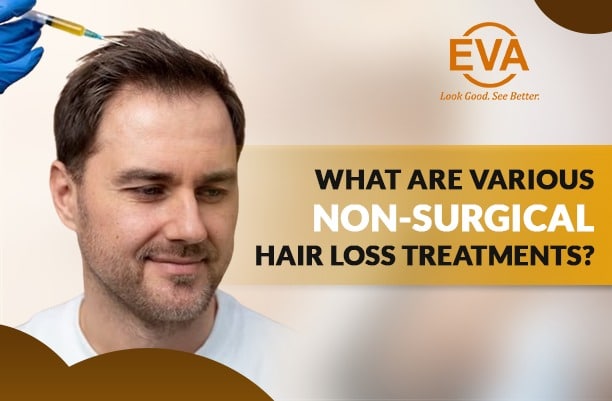A common issue affecting millions of individuals worldwide is hair loss. Although there isn’t a cure for hair loss, there are several non-surgical methods that can assist in disguising, reducing, or increasing hair loss. In recent years, PRP (platelet-rich plasma) therapy has become more and more popular as a non-surgical treatment for hair loss. PRP is a naturally occurring material that is present in your blood and can stimulate hair growth by including proteins and growth factors.
What is PRP Therapy for Hair Loss?
PRP therapy promotes hair growth by using the patient’s blood. Platelets, plasma, and other growth factors are found in blood. A tiny amount of the patient’s blood is extracted for PRP therapy, and the platelet-rich plasma is separated from other blood components by moving the blood in a device called a centrifuge.
Procedure:
- Blood Collection: Just like with a routine blood test, a tiny volume of blood (usually between 30 and 60 millilitres) is taken from the patient’s arm.
- Centrifugation: To separate the components, a centrifuge is used to spin a blood sample quickly. The platelet-rich plasma is separated by this technique.
- Preparation and Injection: The targeted areas of the scalp where hair loss is happening are injected with concentrated platelet-rich plasma (PRP) that includes growth factors.
How Does PRP Work for Hair Loss?
PRP is believed to stimulate hair growth by:
- Activating Hair Follicles: It is believed that the growth factors in PRP encourage the growth phase of hair follicles.
- Increasing Blood Supply: PRP injections have the potential to increase blood flow to the hair follicles, which would improve their functionality and promote the creation of new hair.
- Reducing Inflammation: The hair follicles may benefit from its anti-inflammatory properties.
Treatment Schedule:
PRP therapy normally consists of several sessions spread out a few weeks apart. Depending on the patient’s reaction, the first round of sessions may consist of three to four treatments, with follow-up sessions occurring every few months.
Effectiveness and Results:
Different people may get different results. Following multiple treatments, some may have increases in hair density, thickness, or decreased hair loss. Managing expectations is important because PRP could not be effective for everyone and might not show noticeable improvements in cases of severe hair loss.
PRP vs. Hair Transplant Surgery-
A less painful and costly solution to hair transplant surgery is platelet-rich plasma treatment. However, those who experience significant hair loss might not benefit from it as much. Consult your physician to determine if PRP therapy is appropriate for you if you are thinking about it. if you’re suffering from major hair loss. Hair transplant surgery can be a long-term and suitable solution to restore your hairline and improve your self-confidence.
Conclusion-
All things considered, PRP therapy is a non-surgical hair loss treatment in Delhi that is safe, efficient, and can assist to promote hair growth and enhance scalp health. Consult us to determine if PRP therapy is appropriate for you if you are thinking about it. It’s important to speak with a dermatologist or other experienced medical expert before choosing to use PRP therapy to assess if it’s a good option for your particular hair loss pattern, general health, and desired outcomes.



